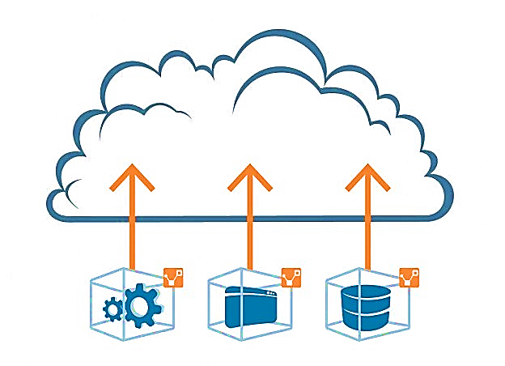Most of the businesses are storing and computing their data on own local or traditional data centre platforms. And after the introduction of Cloud platforms such as AWS, Google Computing and more; the enterprises start moving or migrating their data, applications, and other business elements to cloud computing platforms or the environment. So, the cloud migration can be defined as the data migration of enterprises from traditional platforms to Cloud computing platforms.
There are different types of cloud migrations models followed by the enterprise, it totally depends on what kind of environment they have.
Types of Cloud Migration: General prespective
First Local data centre to Cloud computing platforms
It could be the local to public cloud migration model in which the enterprises move their data and applications from one cloud their local data centres to public clouds like AWS or Google.
Cloud to Cloud migration
Another model is cloud to cloud migration, where the enterprise’s data is already on one cloud and because of reason moving to another. For example, moving from the Amazon cloud to Google cloud computing…
Reverse cloud migration or Declouding
As its name suggests, in this type of cloud migration, the enterprises moved back their data and applications from Public cloud to their local data centre. You might think why one perform the reverse migration, the reason for doing could be security, costing, privacy, the sensitivity of the data etc.
Advantages of cloud migration
Compared with traditional application platforms, on cloud computing platforms the data and hosted applications have the advantages of scalability, powerful computing power, flexibility, no headaches of server maintenance, storage capacity, cost-as-go and performance.
For different Cloud Migrations, strategies or methods see this Article
Things to be noted and keep in mind before Cloud Migration
1. Consider an application or data
While cloud migration has significantly enhanced flexibility and scalability, it looks like a once-in-a-lifetime opportunity, but not every application is suitable for moving to the cloud. Traditional applications, mission-critical workloads and sensitive data, such as credit card information, may not be suitable for public clouds. However, if you want to enjoy the benefits of cloud computing without compromising mission-critical information, companies can use private or hybrid clouds in addition to the public cloud.
2. Evaluation cost
Many organizations migrate to the cloud because of the high cost-effectiveness. Cloud migration reduces the overhead of hardware and IT staff. However, the financial benefits are different for each application. Any application that randomly increases or decreases at the demand level, such as mobile applications, will generate a greater return on investment when migrating to the cloud. But applications that use traditional enterprise hardware, such as earlier versions of the Oracle database, may be more expensive when running in the cloud.
3. Choose your cloud preferences
Applications and costs account for a large percentage of an organization’s consideration of cloud migration. But choosing the right cloud environment is equally important. Although public, private, and hybrid clouds all have their own advantages, organizations must decide which model best meets their needs.
4. Management and security reflection
Cloud migration often affects the organization’s management strategy. For example, an effective management approach to traditional local systems will no longer be useful to the cloud. At the same time, as organizations move data to the public cloud, corporate control declines and more responsibility falls on cloud providers. As a result, companies must adjust their management strategies to reduce their reliance on internal security controls and rely more on cloud providers’ products. Companies must also ensure that provider certification is up to date.
5. Be prepared to accept the cloud to cloud migration challenge
Cloud migration is not just a shift from local technology to the cloud, it is also a data migration from one cloud to another. These cloud-to-cloud migrations include moving from one provider to another, and between private and public clouds. However, the migration process from a private cloud to a public cloud can be difficult.
6. Develop your cloud migration strategy
Once you’ve considered the challenges of data, cost, security, and cloud-to-cloud migration, it’s time to come up with a specific implementation plan for the migration. An important aspect of this plan is to decide how to deal with the legacy of local technology. In some cases, an enterprise can re-adjust hardware to prevent them from being contaminated with dust.
Other resources to see:

Related Posts
Connect & Manage AWS lightsail Windows server using WAC
Top 8 technology buzzwords that you should know in 2023
What is Open source IoT stack?
Top 10 Free Open Source Blogging Platforms or CMS in 2023
6 Best Open source Personal Cloud Software to Setup Cloud storage
Advantages and disadvantages of OneDrive Storage!